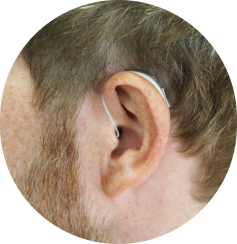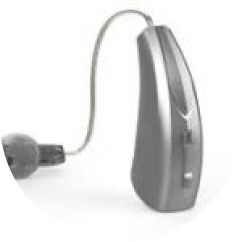What are Hearing Aids?
A hearing aid is a small electronic device that you wear in or behind your ear. It makes some sounds louder so that a person with hearing loss can listen, communicate, and participate more fully in daily activities. A hearing aid can help people hear more in both quiet and noisy situations. A hearing aid has three basic parts: a microphone, amplifier, and speaker. The hearing aid receives sound through a microphone, which converts the sound waves to electrical signals and sends them to an amplifier. The amplifier increases the power of the signals and then sends them to the ear through a speaker. If you’re considering purchasing a hearing aid, it’s useful to research the ear machine price to find an option that fits your budge

Types of Hearing Aids
Digital Hearing Aids
Digital hearing instruments represent the most advanced technology available today. These instruments actually contain a computer chip that is programmed by a computer. This offers the best way currently available to match a particular hearing loss with the most prescriptive amplification needed. Complete flexibility and amazing fine-tuning capability are among the many benefits. This unique technology separates the incoming sound into bands and channels and processes each band and channel independently. This class of hearing instruments utilizes separate circuit paths to independently process different frequency regions of sound. This is the most advanced technology that allows the most precise prescriptive fitting available today, and it is essential to consider the ear machine price when exploring your options.

Programmable Hearing Aids
Programmable hearing instruments represent a more advanced technology than conventional. These instruments are programmed by a computer, allowing a better way to accommodate a given patient’s amplification needs, thus allowing greater flexibility and fine-tuning capability. Most of the technology in these types of instruments is basically analog conventional circuits that are set and controlled by a computer. For those interested, we also provide information on ear machine price to help you make an informed decision.

Conventional Hearing Aids
Hearing aids, which use conventional electronics, have been the mainstay of the hearing aid industry for 40 years. Conventional hearing aid electronics use basic analog technology to provide quality, amplification to patients with a wide range of hearing losses. These hearing aids have as their defining feature the characteristic of adding the same amount of amplification to all levels of sound intensity. Thus, low bass type sounds will be amplified with the same amount of volume as high treble sounds. For this reason, some patients may find that conventional electronic hearing aids provide either too little sound or to much sound to comfortably reach a listening level for the particular hearing loss. When this is the case, the patient should consider a prescription circuit instrument of the programmable or digital type. Priced at the lower end of the cost scale, conventional electronics represent the most basic type of amplification and are a good choice when finances are the major concern.

Types of Hearing Aids

Digital Hearing Aids
Digital hearing instruments represent the most advanced technology available today. These instruments actually contain a computer chip that is programmed by a computer. This offers the best way currently available to match a particular hearing loss with the most prescriptive amplification needed. Complete flexibility and amazing fine-tuning capability are among the many benefits. This unique technology separates the incoming sound into bands and channels and processes each band and channel independently. This class of hearing instruments utilizes separate circuit paths to independently process different frequency regions of sound. This is the most advanced technology that allows the most precise prescriptive fitting available today, and it is essential to consider the ear machine price when exploring your options.

Programmable Hearing Aids
Programmable hearing instruments represent a more advanced technology than conventional. These instruments are programmed by a computer, allowing a better way to accommodate a given patient’s amplification needs, thus allowing greater flexibility and fine-tuning capability. Most of the technology in these types of instruments is basically analog conventional circuits that are set and controlled by a computer. For those interested, we also provide information on ear machine price to help you make an informed decision.

Conventional Hearing Aids
Hearing aids, which use conventional electronics, have been the mainstay of the hearing aid industry for 40 years. Conventional hearing aid electronics use basic analog technology to provide quality, amplification to patients with a wide range of hearing losses. These hearing aids have as their defining feature the characteristic of adding the same amount of amplification to all levels of sound intensity. Thus, low bass type sounds will be amplified with the same amount of volume as high treble sounds. For this reason, some patients may find that conventional electronic hearing aids provide either too little sound or to much sound to comfortably reach a listening level for the particular hearing loss. When this is the case, the patient should consider a prescription circuit instrument of the programmable or digital type. Priced at the lower end of the cost scale, conventional electronics represent the most basic type of amplification and are a good choice when finances are the major concern.
Types of Hearing Styles
1
CIC (Completely in the Canal)
CICs are custom made for each ear; however, these hearing aids are restricted to persons with ear canals large enough to accommodate the insertion depth of the instrument into the ear. Also, the CIC style uses a very small battery that requires good manual dexterity. This type of hearing aid is not suitable for persons with severe hearing losses.
2
ITC (In the Canal)
A little bigger than the CIC, the ITC hearing aids also fit far into the ear canal. Canal hearing aids use a slightly larger battery than the CIC style. This style is used for mild to moderate hearing losses.
3
ITE (In the Ear)
These hearing aids can be used for a wider range of hearing losses. Due to their larger size, ITEs can accommodate larger sound amplifiers and more features such as a telephone switch. They are also easier to handle.
4
BTE (Behind the Ear)
In BTE hearing aids, the electronics are housed in a case that fits behind the ear. Tubing and a custom made earmold direct the sound to the ear canal. Due to its robust design, this style is especially recommended for children. BTE hearing aids can provide more amplification than smaller devices due to the stronger amplifier and the larger battery. This style is available in several colors for hair and skin tone matching.

